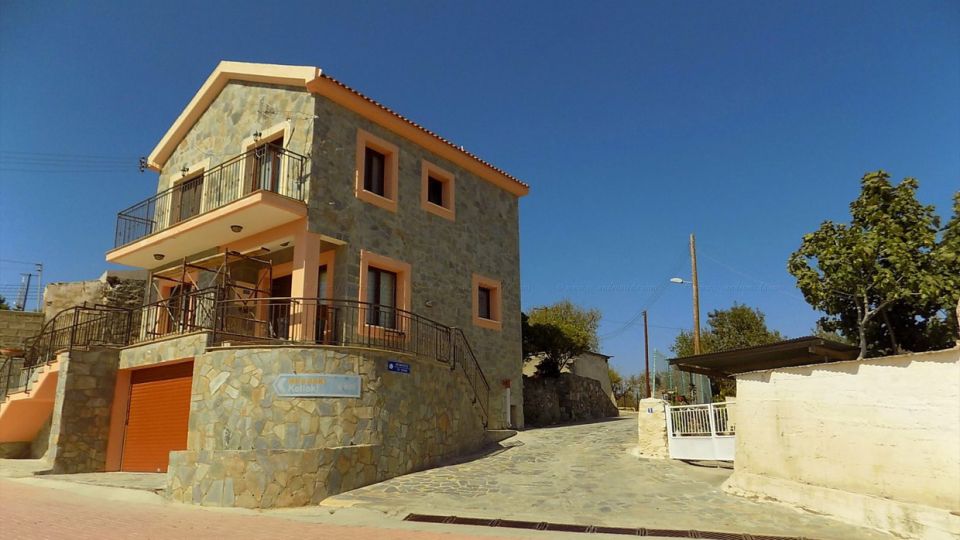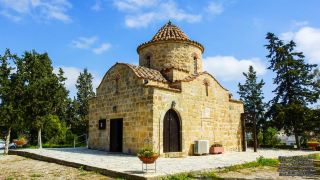The Cypriot Goddess of love and beauty, Aphrodite, when coming out from the sea of Paphos which gave birth to her, she made sure to grace her favorite island with unique beauties and charms. She created beautiful forests that are crossed by inexhaustible rivers and she appointed nymphs to look after them and decorate them. She made sure that the water on the island, gushed out through the bowels of the mountain, to be crystal clear and mineral. She made sure that the ground produced the required amount of potassium combined with a lot of sunshine so as the trees, to produce fruit that cannot be found elsewhere.
The Cypriot Goddess, took care of the vineyards so that they produce grapes as sweet as no other grapes found in any part of the globe. From these grapes, the Nymphs, taught the people of the island, to produce the most delectable wine of the world. They gave it the name "Commandaria".
This wine was the reason why Cyprus was enslaved twice. Richard the Lionheart, in 1191 AD moored on the coasts of the island and with the hordes of the crusaders, he walked up to Nicosia, enslaving it.
After he married his beloved Berengaria, they sealed their vows of loyalty drinking Commandaria wine and then he sold the island to the Franks. The Frankish rule in Cyprus began.
The tough Franks chose a huge area on the southern slopes of Troodos reaching the coasts of Limassol to install their administration. The area chosen was not unrelated to the vineyards of Commandaria. They wanted to control the production and disposal of wine. The area was named "Great Commandaria".
Among the villages chosen was the small village of Sanida. It was in a large plain at the foot of towering mountains dominating the valley of the Vasilikos river with possibility of sight to the coast. North the river basin dominated, which was "imprinted" by dozens of small streams. South was the valley and the river basin of "Dogaki tou Pyrgou", where they had unobstructed views up until the coastlines of Pyrgos, Limassol.
This site was chosen by the Franks to establish military facilities as well as an observatory to monitor the southern coast of the island. The observatory was at the point where the Church of the Metamorfoseos tou Sotiros stands today.
When it got dark and there was no possibility to observe, the soldiers left for their camp. When they stood before the governor, the chief stated as follows.
“As I looked from the observatory, nothing worrying appeared on the coasts”. As time went by, the phrase “As I looked” (San eida), was established as the name of the observatory.
Much later when the village was wiped out by cholera that hit Cyprus, the residents who managed to stay alive, abandoned it and went to the location where the observatory of the Franks was and built their homes. They called it “Sanida” since they paraphrased “San eida”.
There are another 3 versions about the name of the village which are nevertheless qualified as not factual.
Today, the village of Sanida is inhabited by 70 people. New, wide roads have opened, and the distance to the city is “diminished”. Young people choose the village as a permanent residence as well as a professional establishment, since there are quite a few arable areas which are mainly covered in fruit bearing trees.
Even though permanent residents are only a few, the visitor will notice the amount of work that has been recently done, or that are almost finished.
The church of Sotiros, which is very beautiful in terms of architecture, is being neglected for years, and has suffered great damage in its walls. During our visit, we found a crew of specialists that undertook its restoration.
If you find yourselves in Sanida, make the effort to talk to its residents. You will be surprised by the welcomeness and the kindness of these people. In addition, there is a small park with wooden benches for you to have a rest under the shade of the high eucalyptus tree that was planted by some resident of the village in 1942, which is found in the central square, opposite the building of the hunting club.




